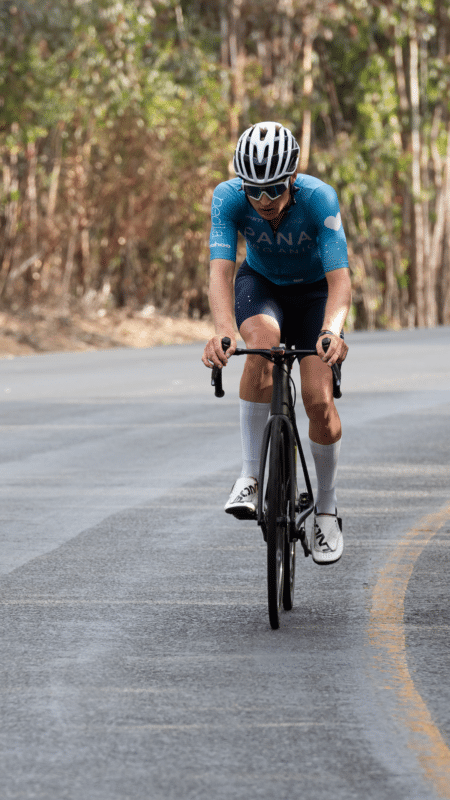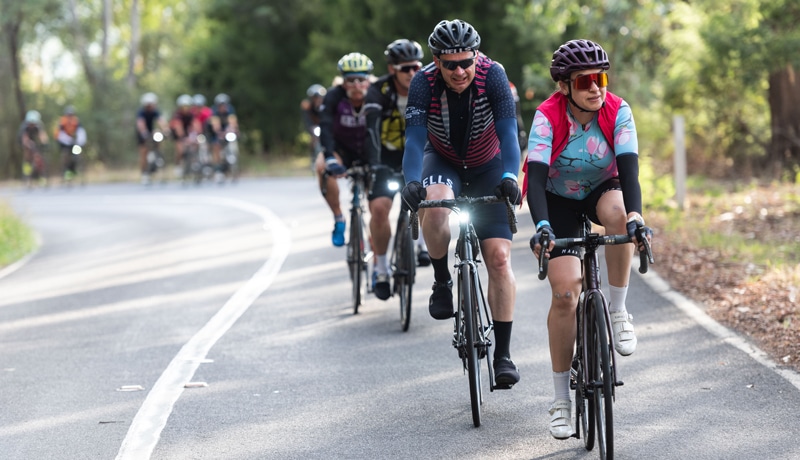Peaks Challenge
Our Peaks Challenge 16-week training plans target all the areas of fitness that are critical to getting you around the 235km course in your best possible time.
Whether you are a first-timer looking for a big challenge or you are a returning rider who wants to achieve your goal time, following a structured training plan is a great way to ensure you are ticking all the boxes to achieve optimal fitness.
Crafted by Dr. Stephen Lane, the 16 week training program for Peaks Challenge is a proven template. It has been tweaked the past years and covers all the aspects of fitness to ensure you are good to go come event day.
You can access a free PDF training program or purchase and download via Training Peaks if you would prefer to upload your data, monitor your progress and use the SMART Ergo files to perform indoor trainer sessions.
For anyone new to training programs, read on for a few tips from Stephen to ensure you get the most out of your training.
1. Choose the volume that is right for you
There is a low, intermediate and high volume program available. Which one is right for you? It will be the program with the amount of hours each week that you feel you can complete. This may vary upon your current training status as well as your work and family responsibilities.
My main advice around adapting each program to specifically suit you would be – Ride as much as you can spare. There is no reason why you can’t increase the total amount of hours in a week if you have more time spare to ride. Just keep in mind to ride within your current limits and try to be progressive each successive week within each training block. The training plans are not a mathematical model, they are just a guide to provide you a logical way to slowly build fitness at a rate that your body can handle.

Graph 1: Example of the volume for the Intermediate program over the 16 week training plan.
2. Know your Training Zones
All the training programs contain sessions that are prescribed based on duration (hours/minutes) and intensity (heart rate/power intervals/perceived exertion). The combination of duration and intensity will vary depending upon what training phase we are in.
All three program variations start off building fitness through low intensity strength efforts and longer endurance rides. As the programs progress each phase starts to contain harder sessions to stress the body and work the energy systems that make you faster. But it is important to have that base fitness first so the body can handle the higher intensities.
The intensity of each session can be adhered to in various ways. The most specific way is with a power meter on your bike. For those with a power meter you may already have an understanding of your training zones and how they relate to performing certain sessions. For those of you who are new to training zones, the below table helps show how zones relate to different intensities and how you can monitor these zones via power, heart rate or perceived exertion.
Table 1: Training Zones
3. Key Training Sessions
The key type of training sessions included within a typical training program are:
- Recovery – Essential for allowing the body to adapt to all the hard work you have done.
- Endurance – Prepares the muscles and body for a long duration exercise
- Strength – Improves muscular strength to be able to produce more force on the pedals and helps improve fatigue resistance.
- Functional Threshold (FTP) – Improves your riding highest sustainable speed by increasing muscle efficiency
- Anaerobic – Targets the lactate system and increases high end power by improving oxygen uptake and delivery
If you look closely enough there is a good relationship between the 5 Training Zones, 5 types of key training sessions that combine to target the 5 key components of fitness.

If we look at the demands of the Peaks Challenge route, it has a specific way in which it places stress on the body and we need to train specifically to be confident we have worked these aspects of fitness.
The basic demands of the course are:
- Tempo to go hard up the hills – This is usually in the range of 80 to 100% of FTP. My general rule is try to never go above FTP as this burns too many matches. But for short hills where you want to keep your speed up or super steep inclines you may have to go over your FTP.
- Aerobic on the flats – In training we specifically focus on riding in our Z2 aerobic zone and get good at doing this for hours on end. On the flat sections of the course you really want to save as much energy as you can. Remember the flats are where you will get the most benefit from being in a group. So always remember a group will move faster and save more energy than riding solo!
- Save it for the steep bit – A big part of Peaks Challenge is the final super steep and long climb up the back of Falls Creek. It is at 200km in and really requires you to save some energy to get up it. This is where all your strength endurance training comes into play. The steep gradient up to Trapyard Gap really requires you to be able to stay on top of your gear and keep moving forward. It is this final section where all your big training days of long distance and strength tempo repeats really will help. Achieving your goal time really does come down to how well you perform up the final climb!
You’ve got this!
Over the coming months there will be a series of videos that will go into more detail about the training programs, as well as the best ways to follow them to get the most out of your training.
There is already a good amount of content up from previous years, so if you are new to Peaks Challenge you can check them out at Stephen Lane – HPTek on YouTube.

Ride safe. Train hard.
Stephen Lane is back this year to help you with your training and preparation for Peaks Challenge Falls Creek. Stay tuned for regular training videos and the 16 week training programs to help keep your preparation on track.
Peaks Challenge early bird tickets now open! It's time to take on the legend.
Commit NowBecome our friend
Find out more about Bicycle Network and support us in making it easier for people to ride bikes.


